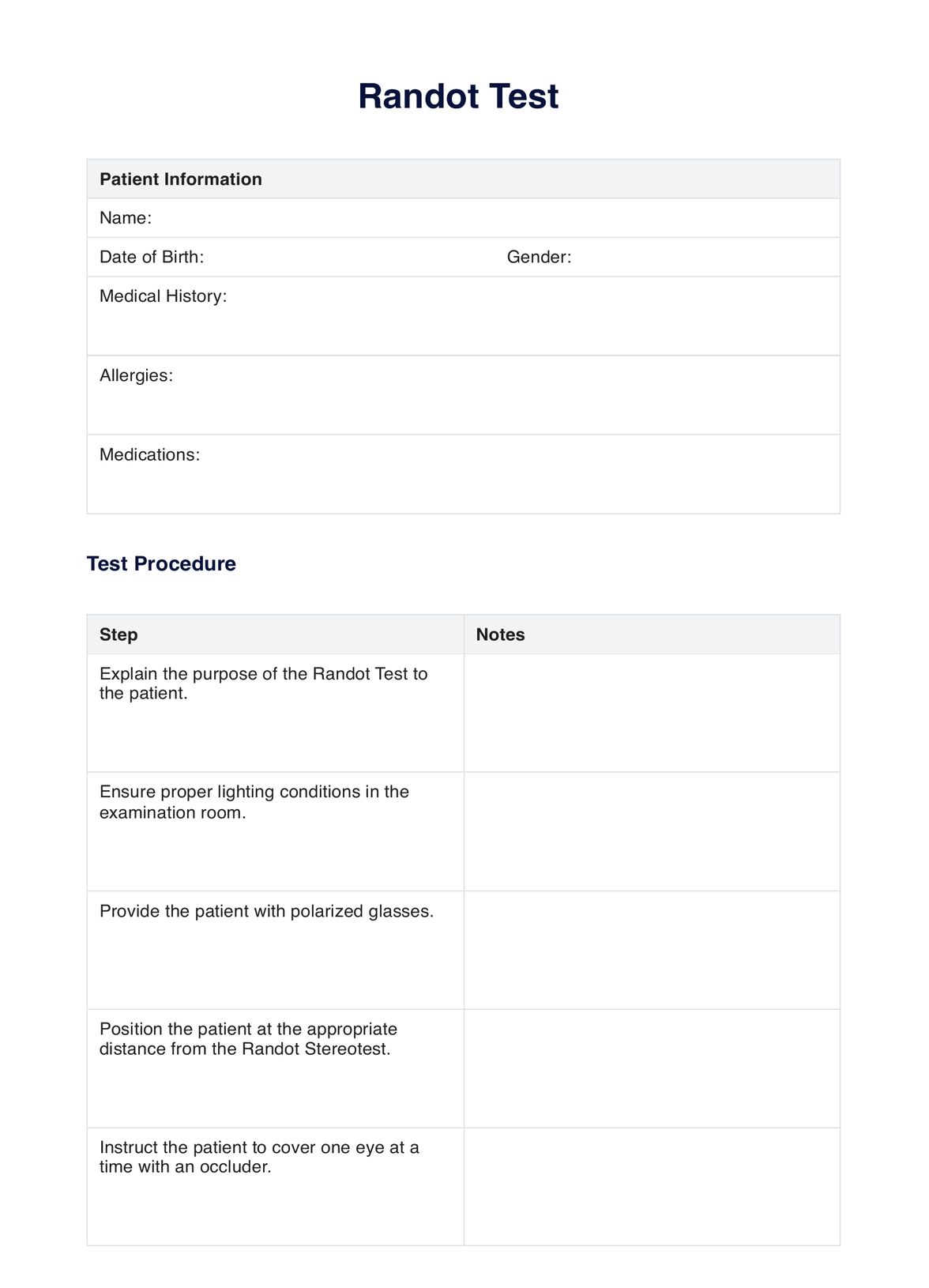The Randot Test assesses normal stereo vision and depth perception and diagnoses conditions like amblyopia, strabismus, and binocular vision disorders.

Randot Test
Discover the Randot Test and understand how it evaluates stereopsis, suitable age groups, conditions diagnosed, accuracy, and alternatives.
Use Template
Randot Test Template
Commonly asked questions
The normal range for the Randot stereo test typically falls between 40 and 100 seconds of arc, indicating good stereoscopic vision.
The TNO random dot test is used to assess stereo understanding, particularly in adult patients with amblyopia or strabismus, by presenting random dot stereograms with varying disparities.
EHR and practice management software
Get started for free
*No credit card required
Free
$0/usd
Unlimited clients
Telehealth
1GB of storage
Client portal text
Automated billing and online payments











